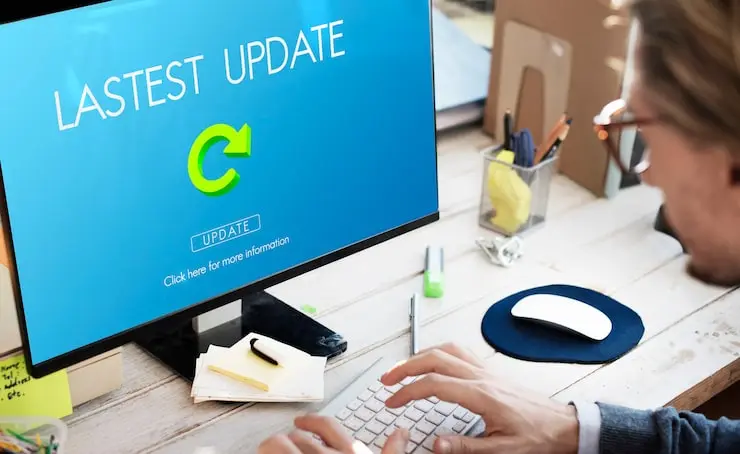Google’s Core Algorithm Updates have long been a source of interest and concern for SEO professionals, website owners, and marketers. These updates can significantly affect how websites rank in search results, influencing organic traffic and overall visibility. Google’s core updates, which are rolled out periodically, aim to improve the relevance and quality of the search results for users. In 2025, the latest core update brings several important changes that are crucial to understand for anyone involved in digital marketing.
In this blog post, we will delve into what the core update entails, the areas it affects, and how businesses and content creators can adapt their SEO strategies to maintain or improve their rankings.
Table of Contents
What is a Google Core Update?
Before diving into the specifics of the latest update, it’s important to understand what a core update is. A core update refers to significant changes to Google’s search algorithm that impact how websites are ranked. These updates are designed to better align search results with user intent by improving the relevance, quality, and accuracy of search results.
Google typically rolls out core updates several times a year, and each one comes with a set of adjustments that can either improve or hurt the rankings of websites, depending on how well they align with the new ranking signals.
What’s New in the 2025 Google Core Update?
The 2025 core update introduces several impactful changes, including:
1. Content Quality and Expertise
Content quality remains one of the most critical factors for ranking success. This update refines how Google evaluates content quality, with a greater emphasis on E-A-T (Expertise, Authoritativeness, Trustworthiness). Google is now better at assessing the expertise behind the content, especially in niches that require specialized knowledge such as medical, legal, or financial topics. Websites that provide content authored by experts or demonstrate trustworthiness (via reputable links and citations) are likely to see improvements in rankings.
2. Improved User Experience (UX) Signals
The update places a stronger emphasis on user experience signals like page speed, mobile responsiveness, and ease of navigation. Websites that offer a seamless, fast-loading experience across devices are now rewarded more heavily. This is part of Google’s ongoing shift towards prioritizing mobile-first indexing and user-centric search results.
3. Passage Ranking Enhancements
Google has made further improvements to its passage ranking algorithm, which allows individual passages within a web page to rank independently. This means that even if a page isn’t fully optimized for a broad keyword, a specific passage or section that addresses the searcher’s query can now rank higher. The update continues to refine this process, enhancing Google’s ability to extract highly relevant information from web pages.
4. Better Understanding of Search Intent
With the advancements in AI and machine learning, Google is now better able to understand search intent. This means that websites with content that aligns closely with user intent—whether it’s informational, transactional, or navigational—are more likely to be rewarded with higher rankings. If you’re a business owner or content creator, it’s vital to align your content with the clear search intent of your target audience.
5. Spammy and Low-Quality Content Penalization
As part of this update, Google has further refined its ability to detect spammy or low-quality content. Websites using manipulative SEO tactics, such as keyword stuffing, clickbait titles, or irrelevant backlinks, may see a significant drop in rankings. Content that lacks depth, context, or originality may also face penalties.
6. Local Search Algorithm Adjustments
This update includes improvements to Google’s local search algorithm, which impacts businesses with physical locations or localized services. Factors like customer reviews, local relevance, and proximity to searchers are becoming even more important for ranking in local search results.
Which Areas of SEO Are Affected by the 2025 Core Update?
The 2025 core update affects several key areas of SEO that websites need to focus on. Here’s a breakdown of the main aspects:
1. On-Page SEO: Content and Optimization
The core update places a premium on high-quality content. Content that is well-researched, informative, and backed by credible sources is more likely to perform well. This includes using semantic SEO techniques such as targeting related terms and incorporating long-tail keywords. Websites that publish content that genuinely answers users’ questions, especially in highly competitive niches, will likely see improvements in rankings.
2. Mobile Optimization and Core Web Vitals
Since Google has shifted to mobile-first indexing, the update has a continued focus on mobile-friendliness and overall Core Web Vitals. Websites that are slow to load or don’t provide an optimal mobile experience are at a disadvantage. Mobile optimization has moved beyond just being responsive; it now includes factors like touch functionality, mobile load speed, and mobile-friendly navigation.
3. Technical SEO: Site Speed and Structure
Improving site speed is more critical than ever. The 2025 core update emphasizes how technical SEO elements, like proper site structure, HTTPS security, structured data, and image optimization, contribute to a positive ranking boost. Websites with fast load times, clean coding, and organized navigation are favored in search rankings.
4. Link Building and Authority
Backlinks continue to be a fundamental ranking signal. The quality and relevance of backlinks are now more important than ever, with Google focusing on natural link building rather than spammy or low-quality links. Websites that demonstrate true domain authority and build links organically are likely to see a positive impact.
5. Local SEO and Reputation Management
For businesses with a local presence, the latest core update places a stronger emphasis on local relevance. Customer reviews, Google My Business optimization, and local content all play pivotal roles in how well a site ranks in local searches. A solid local SEO strategy is essential for businesses targeting nearby customers.
How to Adapt Your SEO Strategy to the 2025 Core Update
With the 2025 core update rolling out, it’s essential to adjust your SEO approach to align with these changes. Here are some actionable steps:
- Focus on Content Quality and Expertise: Ensure your content is authoritative, well-researched, and aligns with user intent. Consider adding expert authorship or citations for more credibility.
- Optimize for Mobile and Page Speed: Invest in technical SEO improvements that enhance your site’s mobile usability and loading speed. Use Google’s PageSpeed Insights tool to identify areas for improvement.
- Diversify Your Link Building: Focus on acquiring high-quality backlinks from relevant, authoritative sites. Avoid spammy or irrelevant links that could harm your site’s reputation.
- Pay Attention to Local SEO: For businesses targeting local customers, optimize your Google My Business profile, encourage customer reviews, and create local content that resonates with your audience.
Conclusion
The 2025 core update from Google brings several key changes that reflect the ongoing shift towards quality content, user experience, and search intent. By focusing on improving your content, technical SEO, mobile optimization, and building authority, you can ensure your website remains competitive in the evolving landscape of search engine rankings. It’s vital to stay updated with these changes and adapt your SEO strategies accordingly to maintain visibility and traffic.
FAQ
What is the Google Core Update?
A Google Core Update is a major change to the search algorithm aimed at improving the quality of search results. It affects how websites are ranked based on various factors like content quality, user experience, and technical SEO.
How often does Google release Core Updates?
Google typically releases core updates several times a year. These updates are usually announced on Google’s official channels and can significantly impact search rankings.
Can a website recover after a core update?
Yes, websites can recover after a core update by improving their content, technical SEO, and user experience. However, recovery may take time and requires ongoing optimization.
How does Google evaluate content quality?
Google uses several factors to evaluate content quality, including expertise, authority, trustworthiness (E-A-T), and how well the content aligns with user intent.
Is mobile optimization more important after the 2025 update?
Yes, the 2025 update continues to emphasize mobile-first indexing, making mobile optimization critical for ranking success.
What is Passage Ranking?
Passage Ranking allows individual sections of a webpage to rank independently for specific queries. This makes it easier for Google to surface the most relevant content from longer pages.
What are Core Web Vitals?
Core Web Vitals are metrics that measure user experience, including loading speed, interactivity, and visual stability. Optimizing these metrics is crucial for improving rankings after the core update.




